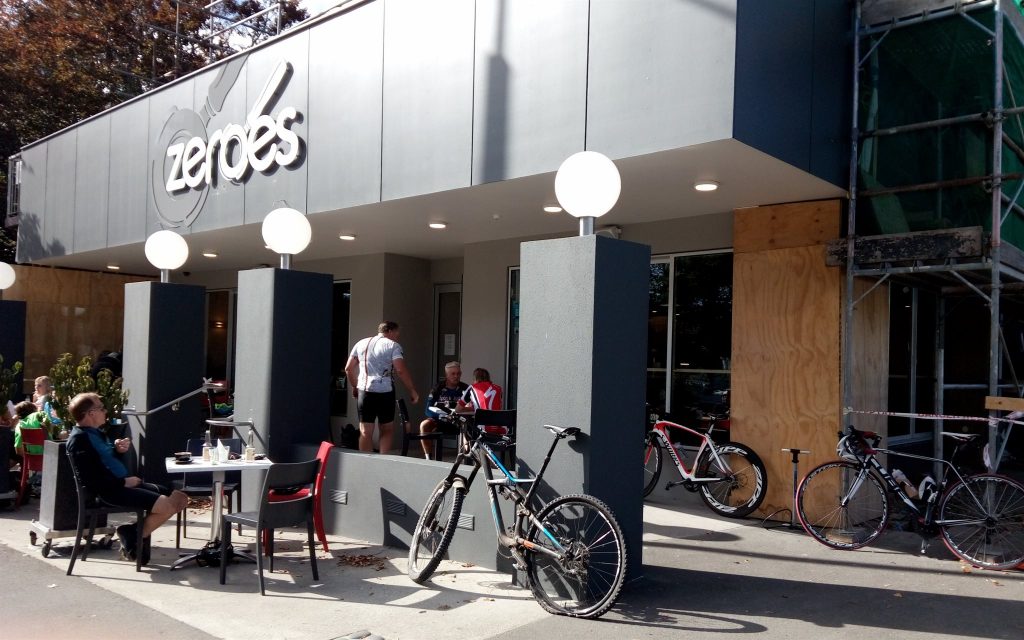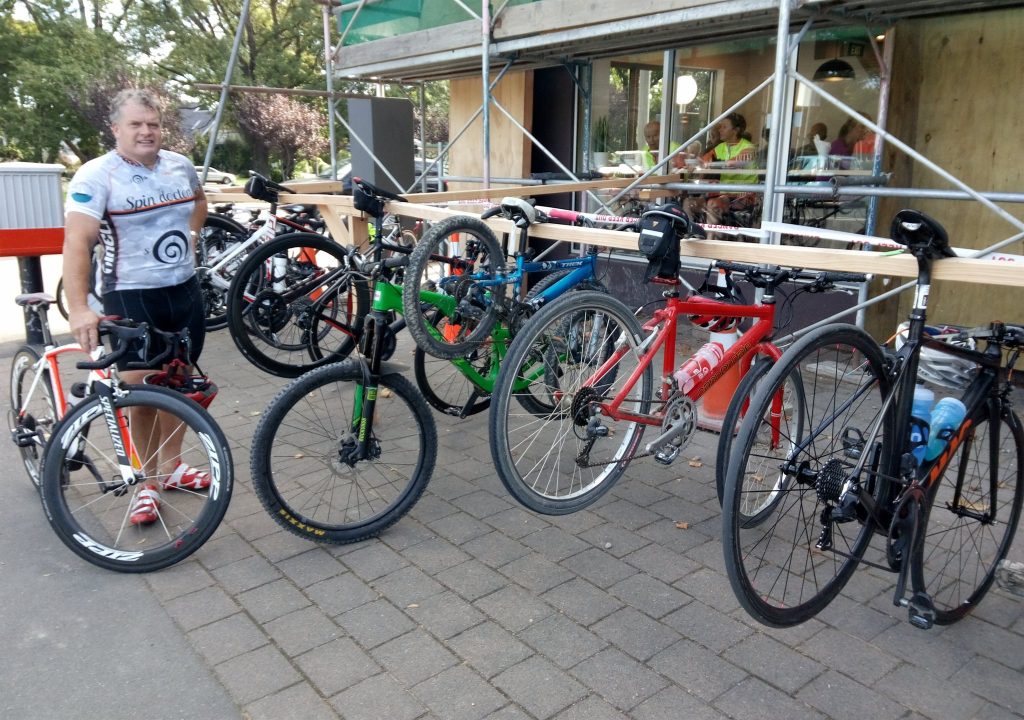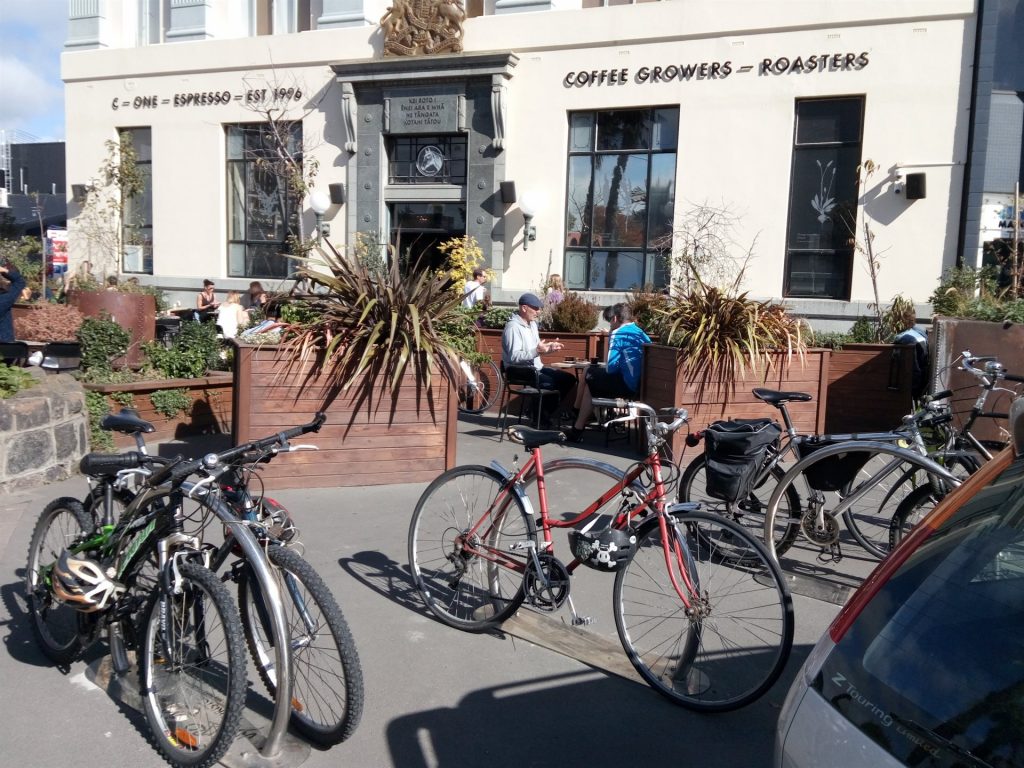Last night I caught up with a few people to chat about transport and urbanism topics over a few drinks. We’re keen to make it a more regular thing, and will probably mix it up between cafe and bar catch-ups. Cycling socially (like the Wednesday Wheelies) lends itself to opportunities to chat about these topics too and, for many people, a coffee stop is the best way to make that happen. Back in Apr 2016, guest blogger Robert mused on how the coffee culture came to be a part of cycling life in New Zealand…
Cycling, Coffee and Culture. It’s a Kiwi Thing , eh bro’…
Well, perhaps not quite as stated but certainly New Zealanders, and in particular those immigrants who made Christchurch their home for the hundred plus thirty odd years from 1869 onward when the first bikes appeared, knew about a culture of cycling, even if it was not labelled as such.
It was simply the way to get around, easily, quickly and cheaply, and for most, the only option available.
As the cost of motorised transport became within the reach of the average family during the second half of the 20th century, roading infrastructure developed to accommodate the increasing numbers of vehicles. Motor vehicles rapidly became the preferred method for private transport.
In the 1960s instant coffee reached our shores and began to challenge tea as our preferred drink for relaxation and refreshment. From this decade on, competitive cycling grew in popularity beginning with the road racing code, and expanding into the codes of BMX racing and multisport events. Such events evolved from the bicycle adaption to off-road use developed in California in the 1980s . Mountain bikes, as they came to be called, sported framing adaption, additional gears, and wide gripped tyres. Whilst these bikes carved out an adrenaline-fuelled sporting code all on their own they also enabled easy access to the great outdoors for adventurous yet time-poor city people who previously may have been regular trampers.

As the 20th century drew to a close, the typical kiwi ‘tea-room’ morphed into a more sophisticated style of local meeting point, the food developed into a fusion of many styles, and the barista was born. Whilst mostly in the cities, partly due to tourism and the discovery of a rural New Zealand from the past by riding bikes on hills, mountains and eventually National Cycle Trails, the entire country in 2016 now has a distribution of ‘cafes’ talked about throughout the world.
As the photo shows, Mobile Coffee provides a service to Alps to Ocean Cycle Path riders on the Quailburn Road (between Lake Ohau and Omarama) . The friendly and local information expert from Otematata makes a mean cup of coffee between the hours of midday and 3.00pm each day. Maximum number of riders passing in a day = 60, usually 15 to 20 . It appeared like a mirage in the wilderness to us, but in reality State Highway 8 is only kilometres away and this route has tourist traffic heading to the Clay Cliffs scenic area.

Two more pieces of the jigsaw complete the scene that we have before us today. The first needs no introduction: ‘The Mamil’
Mamil or MAMIL (an acronym standing for “middle-aged man in lycra”) is a not-so-young bloke who rides an expensive racing bicycle for leisure, wearing professional style body-hugging bicycle jerseys and bicycle shorts.

The second is a developing trend in cities and larger towns where the ‘everyday’ cyclist (one who rides any type of bike, wearing any type of clothing in any type of weather, for no other reason than to journey somewhere necessary in their urban environment) turns up at a café, parks their bike and heads on in. The development of mostly separated urban cycleways in our major cities and towns will enable this species to get to their place of coffee and chat considerably more easily.

Naturally not all partake with enthusiasm the social and transport evolution that is taking place in many western cities. The bikes versus car culture is another story altogether. However it is surprising to see evidence of a local café in St Albans so actively opposed to a cycleway development (Rutland Street, Papanui Parallel Cycleway) to the extent that it organised 100 submissions to CCC expressing opposition to the reconfiguration of car parking. Dinosaur soup with your coffee anyone?
Are you part of the cycling and coffee revolution?

